 A group of five puppets go on a journey The story starts with an old sea captain named Spelhorst who once lived above a tailor's shop. The old captain liked to wander around the city, to take his mind off his troubles. His heart had been broken many years ago and he'd never gotten over it. On one of his walks he comes across a toy shop. Hanging in the toy shop's window are five puppets – a king and a wolf and a girl and boy and an owl. The sea captain eventually puts the puppets in a trunk with the name Spelhorst written on it. Sadly the captain dies and the trunk is sold on. Eventually the puppets come into the possession of two young girls, Emma and Martha. They create a special performance using the puppets. Meanwhile, the puppets are animated and have a life of their own. They talk among themselves about their fate and have their own distinct, sometimes comical, characters. The king sees himself as an exalted monarch, while the wolf is proud of her prowess as hunter. In one amusing scene the maid, Jane Twiddum, mistakes the owl for an old duster and throws him in a bucket. In another hair-raising encounter the boy is picked up by a hawk and taken on a ride, only to be dumped in the forest. Kate Di Camillo has set her magical tale in an imagined early nineteenth century setting. There are maids and parlour rooms and the clip clop of horses' hooves – think the Regency period of Jane Austen. The novel is rich in atmosphere and Di Camillo's language expertly evokes a fabled world of long ago. The story cleverly ties up the sad longing of the sea captain in the puppet's final performance. An entirely satisfying story mixing elements of imaginative play and grief. Children's storytelling doesn't get much better than this. The Puppets of Spelhorst, by Kate DiCamillo. Published by Walker Books. $24.99 Review by Chris Saliba 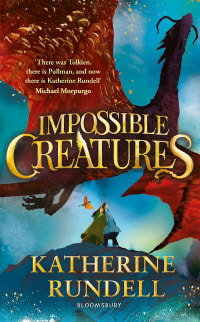 Two children unwittingly find themselves in a battle against evil In a secret part of the world, protected by a secure passageway, is a place called the Archipelago. It's a place of wonder, populated with the creatures of ancient myth: unicorns, sphinxes, nereids, mermaids, dragons, hippocamps and centaurs, to name a few. When a young boy named Christopher Forrester comes across a baby griffin in a lake, he finds himself drawn into the archipelago. There he meets Mal Arvorian. She tells of how a magical force keeps the archipelago and its wildlife thriving, but its natural sustainability is under threat from malevolent forces. Mass extinction and ecological disaster looms. Through a series of great adventures and battles, Mal learns she has been enlisted to help save the Archipelago from ruin, with Christopher offering all the help he can. Children (8+) will eat up this fantasy / adventure story. Katherine Rundell writes in a crisp, well paced prose. There are all the usual set pieces – magic flying coats, floating buildings, strange creatures – creating a fabled world that is never short of surprises. The serious themes of the book (ecological destruction caused by greed) are balanced by Rundell's wit and cheerful style. The bittersweet ending will leave readers emotionally satisfied. Adventure, the battle between good and evil and a wild cast of characters (the gruff sailor Nighthand is a delight) make Impossible Creatures a sure delight for young fantasy readers. Impossible Creatures, by Katherine Rundell. Published by Bloomsbury Children's Books. $18.99 Review by Chris Saliba 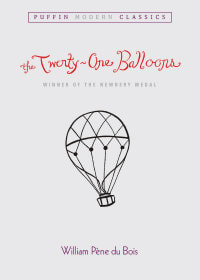 A retired schoolteacher is found in the Atlantic Ocean with twenty deflated balloons. Professor William Waterman Sherman is a retired school teacher. He decides to take a leisurely balloon trip, departing from the city of San Francisco. His balloon is somewhat of a luxury one, as it carries a basket the size of a small house, fitted out with the basic necessities for comfortable living. The trip goes well, with the Professor flying over the Pacific Ocean, until some seagulls start pecking at his balloon. He crashes to earth and finds himself on the volcanic island of Krakatoa. It is there he meets a certain Mr F, who introduces him to the unusual inhabitants of the island. Twenty families reside there, living on what they term a “restaurant economy”, equally sharing cooking responsibilities and making sure the cuisine is always varied and delicious. The most extraordinary aspect of the island is the revelation that it contains a diamond mine, with enough diamonds to make all the island's residents multi-millionaires. However, there is a sting in the tail of this apparent good fortune. The full diamond value can't be realised because if they were all sold on the world market it would chronically depreciate their value. The residents spend their days in pleasant pursuits, and have invented some interesting technologies of their own. One charming novelty they have created is a merry-go-round which is suspended with balloons. Another invention involves a huge suspended platform – again with balloons, twenty in all – that is to be used in case of a volcanic eruption, when a speedy getaway for Krakatoa's residents would be required. When the Professor is later found mysteriously floating in the Atlantic Ocean, he is rescued and presents a talk at the Western American Explorers' Club about his experiences. William Pene du Bois published The Twenty-One Balloons in 1947, with illustrations by himself. The book soon went on to win an award, the Newbery Medal. It's an exciting and innovative adventure story, with plenty of amusing contraptions described in minute detail – think TV's Gilligan's Island, but technologically more sophisticated. The novel is well paced and lively (the early scenes describing the gathering excitement as the Professor travels to deliver his speech, from a specially prepared bed to accommodate his fatigue, is especially amusing). A thoroughly enjoyable children's classic full of energy, invention and good cheer. The Twenty-One Balloons, by William Pene du Bois. Published by Puffin.  Meet Parsley the Lion and his friends from the herb garden. Parsley the Lion and his friend Dill the dog live in a herb garden. The garden is watched over by Constable Knapweed, who always has a notebook at the ready to jot down any behaviour that seems out of order. Other characters include Mr Bayleaf, Sage the owl, Aunt Mint, the school teacher Mr Onion and his students, the Chives. The 18 stories in The Adventures of Parsley the Lion centre mostly around Parsley and Dill, with other characters making appearances. In one story Dill tries to sell his amateur paintings, which he passes off as masterpieces; in another Dill has an open day for his kennel, insisting it is one of England's stately homes. When Parsley buys a car, it is with disastrous results; and an important telegram is misinterpreted by the over confident Dill, leading the two friends to miss a fun barbeque. Parsley the Lion first appeared in 1968 in a children's TV series called The Herbs, created and written by Michael Bond (Paddington Bear). The stories collected here are from published books that tied in with the TV series, with gorgeous new illustrations from Rob Biddulph. Funny, endearing, whimsical and very British, the world of the herb garden is beautifully evoked in Michael Bond's superb storytelling. This is quality children's literature, with nothing dumbed down or made gross. The Herb Garden and its denizens have much to teach us, all in a good, fun way. Ages 5 + The Adventures of Parsley the Lion, by Michael Bond. Illustrations by Rob Biddulph. Published by HarperCollins. $19.99 Review by Chris Saliba 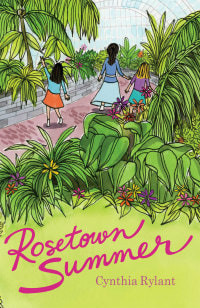 Flora and her friends worry that one of their favourite places, the Wings and a Chair Bookshop, may be about to close. Flora Smallwood lives in idyllic Rosetown, a place in Indiana, America. Her mother works part time at the Wings and a Chair bookshop. Flora likes to hang out at the bookshop, which is run by the free spirit Miss Merriwether. She reads books in the children's nook with her friend, Yuri, whose family is originally from Ukraine. Flora has another good friend, Nessy, who likes all things horticultural. Life in Rosetown is calm and stable, which is just how the children like it. They all feel they would like to live in Rosetown forever. And yet life is all about change, sometimes painful. Miss Merriwether, who in her past has been footloose and fancy free, feels the urge to move on again. There is speculation that she is going to sell the shop and leave. Flora and her friends feel distraught about this. What will they do if they lose Miss Merriwether? Will someone else buy the bookshop? Rosetown Summer is a sequel to Cynthia Rylant's original 2018 novel, Rosetown. The action takes place one year on, with Flora now ten-years-old. At 80 pages, this is a slim follow-up. The book finishes up all too soon. However, fans of Rosetown will enjoy the chance to re-enter Flora's (mostly) perfect little world of favourite shops, friends and after school activities. It is perhaps recommended to read Rosetown and Rosetown Summer together as one very satisfying experience. Rosetown Summer, by Cynthia Rylant. Published by Beach Lane Books. $14.99 Review by Chris Saliba 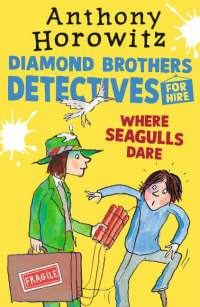 The Diamond Brothers detective agency is brought in to investigate a missing computer hacker. Tim Diamond runs his own detective agency, but he's a little slow witted. That's putting things nicely. Thankfully his kid brother, 14-year-old Nick, is totally switched on and able to pretty much run the show. When the beautiful Jane Nightingale approaches the brothers with a mystery to solve – the strange disappearance of her father, a famed computer hacker – it leads them to all sorts of adventure and near death experiences. They soon find themselves being followed by a bunch of thugs, members of the White Crusaders, a nationalist group headed by Neville Fairfax. Can the brothers stop the xenophobic Fairfax from carrying out his evil plans? Where Seagulls Dare is the latest in the Diamond Brothers series of novels and stories by Anthony Horowitz. It's a rip-roaring, laugh-a-minute caper, with poor older brother Tim the butt of many a joke. Tim makes for an endearing goofball, always eager to slip out of a tricky situation and hopelessly unable to focus on the job at hand. Thankfully Nick keeps the investigation on track, and it is his wit and energy that propels the narrative. The plot nods to contemporary events – Neville Chamberlain is loosely based on Nigel Farage, leader of UKIP; Alistair Nightingale, the computer hacker, seems a reference to Julian Assange – although this isn't belaboured. A crowd pleasing adventure story for kids 9+. Adults may get a chuckle out of it too. Where Seagulls Dare, by Anthony Horowitz. Published by Walker Books. $14.99 Review by Chris Saliba 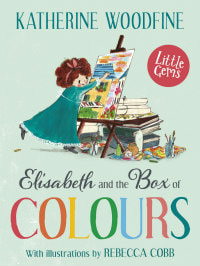 An 18th century true story is brought to life in this beautiful children's book. Elisabeth lives with her family in Paris. The time is long ago. She is a little girl who loves to paint and draw. Her father is also an artist. One day Elisabeth is sent to a boarding school on the other side of Paris. Things don't work out so well. The building is grey and depressing. Her teacher, Sister Augustine, confiscates her colourful crayons and sternly makes Elisabeth stick to her lessons. Life is unremittingly gloomy. Then things take a very dark turn when her father dies. Seeing Elisabeth's obvious grief, her schoolmates organise some simple pens and paper for her. She draws an image of her father and starts to feel better. Finally Sister Augustine returns Elisabeth's colourful crayons and she can start to find proper healing in art. Based on the life of French artist Élisabeth Louise Vigée Le Brun (born 1755), Elisabeth and the Box of Colours is a delightful yet gently melancholic story for emergent readers. Katherine Woodfine captures the charms of an imagined 18th century Paris in her simple descriptions of people and places. Coupled with Rebecca Cobb's sensitive watercolor illustrations, this chapter book is a wonderful gem. Ages 5-8. Elisabeth and the Box of Colours, by Katherine Woodfine. Illustrated by Rebecca Cobb. Published by Barrington Stoke. $12.99 Review by Chris Saliba  A group of animals try to keep an ailing king alive with their storytelling. King Mansolain has reigned over the Copper Mountains for a thousand years, but his heart is failing. His time could be up. One of the king's loyal subjects, the hare, sits on his long beard and anxiously listens for his heartbeat. The Wonder Doctor, however, may be able to help. If he can get the leaf of the Golden Speedwell plant, he can make a potion that will save the King. But it is going to take time. He will have to travel far, and in all types of weather, to attain his object. As the Wonder Doctor travels, he tells the animals he meets to go to King Mansolain's castle and tell him a story. Only stories that can prolong the King's life. A steady stream of animals arrive, one by one, at the castle and tell their tales. A wolf, a squirrel, a duck, a beetle, a lion, a dragon, a field mouse, a swallow, a donkey and ten bumblebees, who all sing various parts of their story. Dutch children's writer Paul Biegel first published The King of Copper Mountains in 1964. It is one of those timeless classics, a series of fantasy tales spoken by charismatic and intriguing forest creatures. The King's magnificent castle is a sublime piece of magic, with its various theme rooms and glorious gardens. At the end of each day, the creatures retire to an assigned part of the castle to sleep. The book gives off a warm glow as the castle slowly fills up with animals who have all made a vow to live peaceably. A perfect children's book that people of all ages can enjoy. The King of the Copper Mountains, by Paul Biegel. Published by Pushkin Children's. $15.99 Review by Chris Saliba  A boy goes on an adventure to Wild Island in this 1948 children’s classic. A young boy named Elmer Elevator meets an old alley cat. Elmer confides in the cat that when he grows up he would like to own an airplane. “Would you like to fly very, very much?” askes the alley cat. Elmer certainly would. The cat has an idea. He explains that in his younger days he was quite a traveller. One of his journeys included a place called Wild Island, a place that is mostly jungle and inhabited by very wild animals. A dragon also lives on Wild Island, kept in captivity by the other animals and used to fly across a troublesome river. The cat suggests if Elmer can free the dragon, then he’d certainly be able to travel on his back with no qualms. The cat and the dragon are friends, you see, and Elmer is assured everything would be alright. Inspired by this story, Elmer runs away from home. He stows away on a commercial ship bound for the Island of Tangerina, which is close by Wild Island. When Elmer arrives, his adventures begin immediately and he meets various interesting animals, including some tigers, a rhinoceros, a lion and a gorilla. Finally he manages to find the dragon. American author Ruth Stiles Gannet first published My Father’s Dragon in 1948. Two more books followed in the series. The novel is narrated by Elmer’s daughter, giving the sense of an adult reminscing on old childhood stories their father has told them. The characters of the different animals Elmer meets are charming and delightful. The vain lion that likes to groom himself and tie ribbons in his mane is particularly endearing and funny. Simple, magical storytelling for years 7 + My Father's Dragon, by Ruth Stiles Gannet. Published by Swift Press. $14.99 Review by Chris Saliba 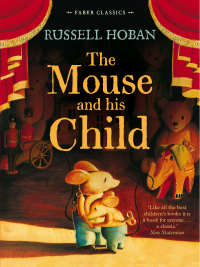 A wind-up mouse and his son’s journey from toyshop window to urban dump and beyond. A wind-up mouse sits in a toyshop window. He holds hands with a smaller mouse, his son. They are permanently connected in this way and rely on being wound up for any movement. In the shop window there is also a toy elephant and seal. The child mouse dreams of forming a family, hopefully with the elephant and seal. But these dreams are interupted when the mouse and his child are bought by a family one Christmas. They stay with the family for five years, then find themselves disposed of, rusted and rotting on a dump. The child mouse’s dream of creating a family and having a permanent home is revivied. No sooner has the child made this wish than they become the subject of a cruel master, Manny Rat. He is the boss of the dump, with obsequious rat underlings that follow his orders. Manny Rat runs a fleet of “wind-ups” that perform all sorts of hard labor. The child and his mouse in effect become his slave. Even the once beautiful elephant has fallen into his clutches, and now stumbles around with one eye. The mouse and his child escape for a time and meet the wise Frog, who is a fortune teller. Frog repeats a prophecy, over and over: “A dog shall rise, a rat shall fall.” What can the great Frog’s words mean? Many more hardships must be endured, battles waged and enemies vanquished, until the mouse and his child at last find the security they so desperately desire. Before writing adult novels, Russell Hoban was a celebrated children’s author. His 1967 novel, The Mouse and his Child, is a richly imagined story about two vulnerable outsiders looking to find their place in the world. What makes this stand out literature is the fine quality of Hoban’s prose and the story’s broad cast of well fleshed out characters. The mysterical Frog, with his sombre musings and haughty demeanour, is especially delightful. Readers of any age will find this plaintive tale emotionally and aesthetically satisfying. The Mouse and His Child, by Russell Hoban. Published by Faber Children. $14.99 Review by Chris Saliba |
AuthorNorth Melbourne Books Categories
All
Archives
March 2024
|
 RSS Feed
RSS Feed
